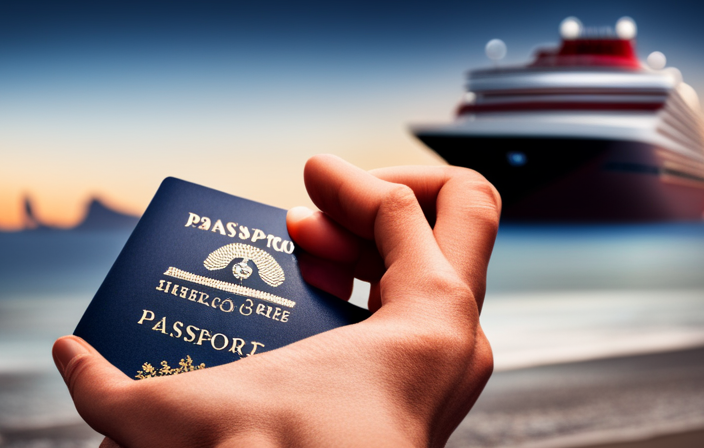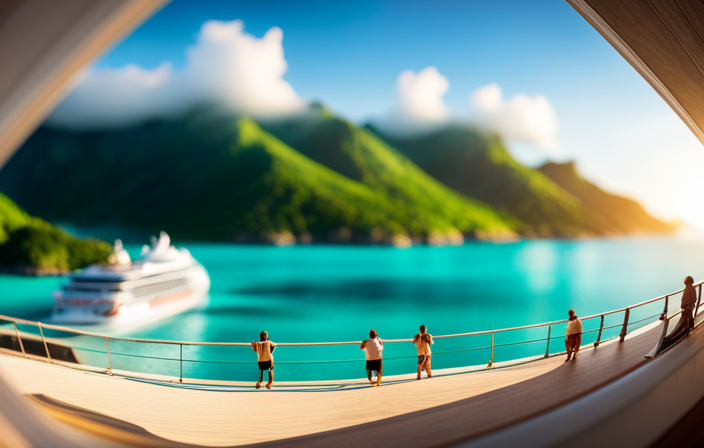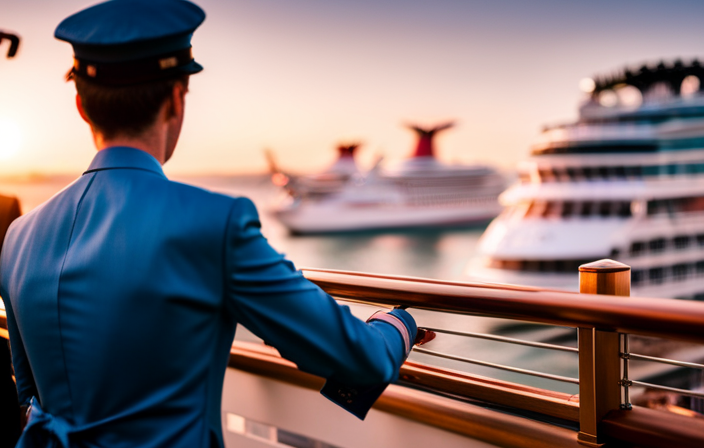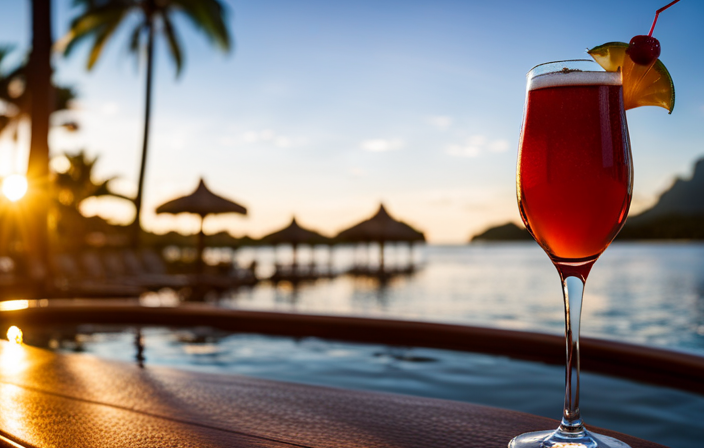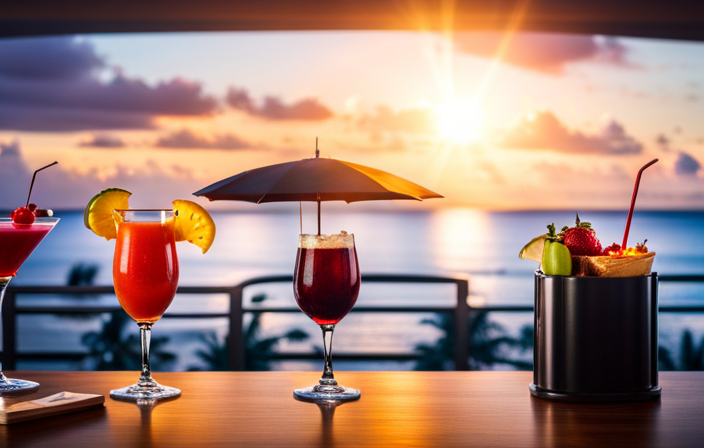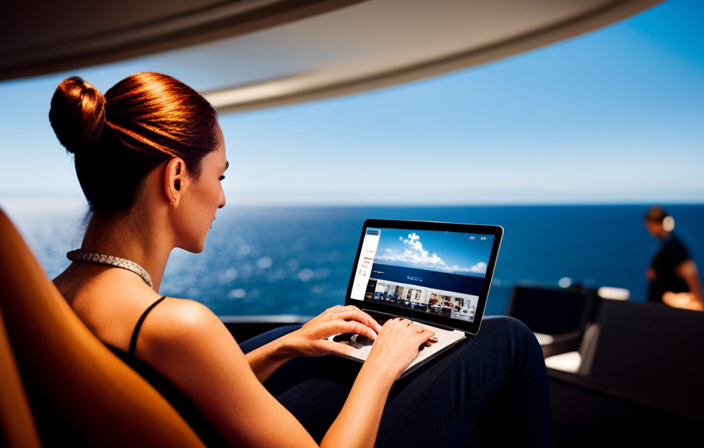Cruise Destinations
Hawaii’s New Hotel Tax Impacts Your Perfect Maui Vacation
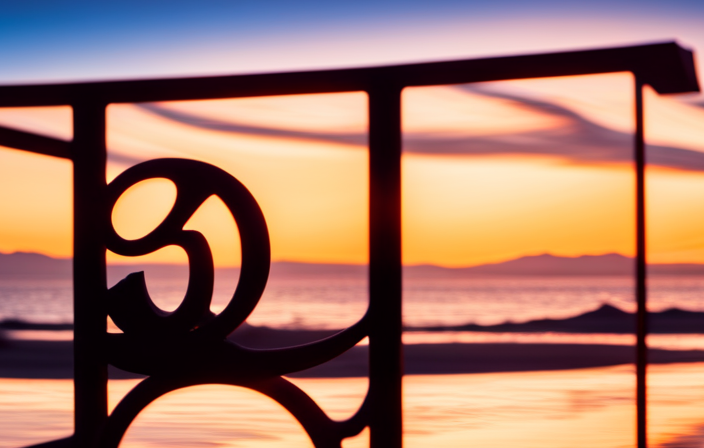
While planning my dream vacation to Maui, I discovered that Hawaii has recently implemented a tax on hotels and short-term lodgings. This tax, which is set at 3%, is expected to generate substantial revenue for beloved tourist destinations like Maui.
With estimates ranging from $50 to $70 million, this tax doubles the previous revenue and was introduced through House Bill 862. Despite Governor David Ige’s initial veto, lawmakers overrode it, and the changes will now take effect.
Let’s delve into the implications and how this tax will impact our vacation plans.
Key Takeaways
- The new hotel tax in Hawaii imposes a 3% tax on hotels and short-term rentals, aiming to generate estimated revenue of $50 to $70 million for popular tourist destinations like Maui.
- This tax doubles the revenue compared to the previous law and was introduced through House Bill 862. Counties also have the ability to charge their own tax and keep the fund.
- Governor David Ige initially vetoed House Bill 862 due to concerns about the tourism authority’s funding and managing the influx of tourists, as well as potential revenue disparities between islands and counties. However, lawmakers overrode the veto and the changes will now take effect.
- The funding shift for the Hawaii Tourism Authority means that its budget will now come from federal coronavirus relief funds, reducing reliance on income from tourism revenue. This change in funding distribution is due to House Bill 862.
Overview of the New Hotel Tax in Hawaii
I think it’s important to understand the overview of the new hotel tax in Hawaii. The tax includes a 3% charge on hotels and short-term rentals. This is expected to generate an estimated revenue of $50 to $70 million for popular tourist destinations like Maui.
The new tax doubles the revenue compared to the previous law. It was introduced through House Bill 862.
The implementation of this tax will have an impact on local businesses and the tourism industry. Local businesses, especially those in the hospitality sector, will have to adjust their pricing and strategies to accommodate the tax.
The effects on the tourism industry may include potential changes in visitor numbers and spending patterns. It will be interesting to see how this new tax will shape the future of tourism in Hawaii.
Implications of the 3% Tax on Hotels and Short-term Rentals
With the implementation of the 3% tax on accommodations, visitors to Maui will experience an increase in their expenses. This new tax will have significant impacts on the tourism industry and economic implications for the local economy. Here is a table showing the estimated revenue from the tax:
| Destination | Estimated Revenue (in millions) |
|---|---|
| Maui | $50 – $70 |
The introduction of this tax doubles the revenue compared to the previous law and will provide much-needed funds for infrastructure improvements and local housing. While the tax may add to the expenses for tourists, it will contribute to the development and maintenance of the island’s facilities and services. The local government’s initiative to impose the tax shows a quick response to the opportunity to generate additional revenue. Overall, the 3% tax on accommodations in Maui will have both positive and negative impacts on the tourism industry and the local economy.
Increased Revenue and Its Impact on Popular Tourist Destinations
The increased revenue from the new tax has a significant impact on popular tourist destinations like Maui. The estimated revenue of $50 to $70 million will have implications for local businesses and could potentially lead to an increase in visitor costs.
With the doubling of revenue compared to the previous law, the new tax brings in much-needed funding for infrastructure improvements and local housing. However, there are concerns about the potential disparities in revenue between different islands and counties.
Despite these concerns, officials on Maui are fast-tracking the implementation of the tax, recognizing the opportunity to generate additional revenue. As travel restrictions in Hawaii ease due to high vaccination rates, there has been an increased influx of visitors to the state since the beginning of 2021.
The new tax will play a crucial role in supporting the tourism industry and its impact on local businesses.
Understanding House Bill 862 and Its Introduction
Introduced through House Bill 862, the new tax aims to generate additional revenue for infrastructure improvements and local housing.
-
Impact on local businesses: The implementation of the new tax may have various impacts on local businesses in Hawaii. Some businesses, especially those in the hospitality industry, may experience a decrease in demand as tourists may be deterred by the additional tax. On the other hand, local businesses that provide goods and services to support infrastructure improvements and housing projects may benefit from the increased revenue generated by the tax.
-
Public opinion on the new tax: Public opinion on the new tax is divided. Some people believe that it is necessary to generate additional revenue for much-needed improvements in infrastructure and local housing. They see it as a way to support the growth and development of the community. However, others argue that the tax may discourage tourism and have negative impacts on the local economy. They are concerned about the potential loss of jobs and decrease in business activity.
Governor’s Veto and Concerns About Tourism Management
I believe Governor David Ige’s veto of House Bill 862 raises valid concerns about the funding and management of tourism in our state.
The veto stems from concerns about the tourism authority’s ability to effectively handle the influx of tourists and the potential for revenue disparities between islands and counties.
With the new hotel tax in place, there is a doubling of revenue compared to the previous law, with estimates ranging from $50 to $70 million for popular tourist destinations like Maui.
However, the veto raises questions about how this revenue will be managed and distributed. It is essential to ensure that all islands and counties benefit equitably from the funds generated by the tax.
The concerns about tourism management and potential revenue disparities must be addressed to ensure a fair and sustainable tourism industry in our state.
Lawmakers Override the Veto – What It Means for Tourists
After Governor David Ige vetoed House Bill 862, concerns were raised about the potential impact on tourism management and the influx of tourists. However, lawmakers decided to override the veto, meaning that all the outlined changes, including the new hotel tax, will now take effect.
This has significant implications for tourists visiting Hawaii, particularly in terms of their spending. The introduction of the 3% tax on hotels and short-term rentals is expected to double the revenue generated compared to the previous law. This increased revenue has the potential to create disparities between the various islands and counties, as each county has the ability to charge its own tax and keep the fund.
Therefore, tourists may experience varying costs depending on their chosen destination within Hawaii.
Funding Shift for the Hawaii Tourism Authority
The funding for the Hawaii Tourism Authority will now come from federal coronavirus relief funds, reducing reliance on income generated through tourism revenue.
This shift in funding has significant implications for local businesses and the future plans for tourism development.
With the decrease in dependence on tourism revenue, local businesses may experience a decline in financial support. However, the injection of federal relief funds could potentially offset this impact and provide a lifeline for struggling businesses.
As for future plans for tourism development, the shift in funding source may prompt a reevaluation of priorities. The Hawaii Tourism Authority may now have the opportunity to focus on sustainable and community-centered tourism initiatives, ensuring the long-term viability and resilience of the industry.
It remains to be seen how this funding shift will shape the future of tourism in Hawaii and its impact on local businesses.
Less Reliance on Tourism Revenue – Federal Coronavirus Relief Funds
With the funding shift to federal coronavirus relief funds, there is now a reduced reliance on tourism revenue in Hawaii. This change has had a significant impact on the local economy. Here are four key points to consider:
-
Decreased reliance on tourism revenue: The Hawaii Tourism Authority’s budget will now come from federal relief funds, reducing the need for income raised through tourism.
-
Change in funding distribution: The 10% transient accommodations tax will no longer be the primary source of funding. Instead, counties have the ability to charge their own tax and keep the fund.
-
Increased funding from relief funds: The shift in funding is a result of House Bill 862, which introduced a new hotel tax. This change doubles the revenue compared to the previous law.
-
Potential economic impact: While the reduced reliance on tourism revenue may provide stability during uncertain times, it is essential to monitor the long-term impact on the local economy. The success of the federal relief funds in sustaining Hawaii’s economy will be crucial for the state’s recovery and future growth.
Changes in Funding Distribution and County Taxes
I support the changes in funding distribution and county taxes as they provide an opportunity for increased revenue and local control. The new hotel tax in Hawaii, introduced through House Bill 862, allows counties to charge their own tax and keep the funds. This means that popular tourist destinations like Maui can generate an estimated $50 to $70 million in revenue, doubling the previous amount. The impact on local businesses is significant, as this additional revenue can be used for infrastructure improvements and local housing. The table below illustrates the changes in funding distribution and county taxes:
| Changes in Funding Distribution and County Taxes |
|---|
| – Counties can charge their own tax and keep the fund |
| – Increased revenue for local businesses |
| – Opportunity for infrastructure improvements and local housing |
| – County autonomy in tax decisions |
Overall, these changes empower counties to have more control over their tax decisions, benefiting local businesses and allowing for targeted investments in the community.
Implementation of the New Tax on Maui
Implementing the new tax on Maui has been a priority for officials. We are fast-tracking the motion to begin charging tourists an extra 3% tax. This new tax will have a significant impact on local businesses and could potentially lead to a decrease in tourist arrivals.
Here are three key points to consider:
-
Increased financial burden on local businesses: The additional 3% tax on hotels and short-term rentals will directly affect the cost of accommodations for tourists. This could potentially deter some visitors from choosing Maui as their destination, impacting local businesses that rely heavily on tourism.
-
Competitiveness with other destinations: With the implementation of this new tax, Maui may become less competitive compared to other tourist destinations that do not have such a tax. Tourists may opt for alternative locations where the cost of accommodations is lower, resulting in a decrease in tourist arrivals to Maui.
-
Potential decline in revenue: While the new tax aims to generate additional revenue for infrastructure improvements and local housing, there is a possibility that it could backfire. If the increase in prices deters a significant number of tourists, the overall revenue generated could potentially decrease instead of increase, leading to unforeseen consequences for the local economy.
It is crucial for officials to carefully monitor the impact of this new tax and make adjustments if needed to ensure the long-term sustainability of the tourism industry on Maui.
Travel Restrictions and Vaccination Rates – How They Affect Your Maui Vacation
Lifting travel restrictions in light of high vaccination rates has led to an increase in travel to Maui since the start of 2021. The impact of travel restrictions on tourism has been significant, with more people now able to visit and enjoy the beauty of the island.
The high vaccination rates in Hawaii, with nearly 60% of Hawaiians fully vaccinated against COVID-19, have played a crucial role in easing these restrictions. This has given visitors confidence in their safety while traveling.
Additionally, visitor safety measures are being implemented to ensure a safe and enjoyable experience for everyone. These measures include enhanced cleaning protocols, mandatory mask-wearing in certain areas, and social distancing guidelines.
With the combination of lifted travel restrictions, high vaccination rates, and visitor safety measures, Maui is experiencing a resurgence in tourism, bringing economic benefits to the island.
Frequently Asked Questions
How Will the New Hotel Tax in Hawaii Affect the Cost of My Vacation in Maui?
The new hotel tax in Hawaii will affect the cost of my vacation in Maui by increasing the overall expenses. This may impact local businesses and potentially reduce the affordability of accommodations for visitors.
What Is the Purpose of the Extra 3% Tax on Visitors to Maui?
The extra 3% tax on visitors to Maui aims to generate additional revenue for the government and fund infrastructure improvements and local housing. It may impact the tourism industry and affect government revenue.
How Will the Increased Revenue From the New Hotel Tax Impact Popular Tourist Destinations Like Maui?
The increased revenue from the new hotel tax will have a significant impact on popular tourist destinations like Maui. It will provide funding for infrastructure improvements and local housing, enhancing the overall experience for visitors.
What Were the Concerns That Led to Governor David Ige Vetoing House Bill 862?
The concerns that led to Governor David Ige vetoing House Bill 862 were related to the funding and management of the tourism authority, potential revenue disparities between islands and counties, and the influx of tourists.
How Will the Funding Shift for the Hawaii Tourism Authority Affect the Tourism Industry in Maui?
The funding shift for the Hawaii Tourism Authority will have a significant impact on the tourism industry in Maui. It will reduce reliance on tourism revenue and provide more funding for infrastructure improvements and local housing.
Conclusion
In conclusion, the new hotel tax in Hawaii is expected to have a significant impact on vacationers visiting Maui. With the implementation of a 3% tax on hotels and short-term rentals, the state is projected to generate substantial revenue ranging from $50 to $70 million.
This increase in funding, which doubles the previous amount, is aimed at supporting infrastructure improvements and local housing. While Governor David Ige initially had concerns about the funding and management of the tourism authority, lawmakers overrode his veto, ensuring that the changes will take effect.
Interestingly, the funding for the Hawaii Tourism Authority will now come from federal coronavirus relief funds instead of relying heavily on tourism revenue. Additionally, counties have the option to charge their own tax and retain the funds, allowing for potential revenue disparities between islands and counties.
It is important to note that the implementation of the new tax on Maui is being expedited, indicating the urgency in generating additional revenue. Overall, with travel restrictions easing and a high vaccination rate in Hawaii, vacationers planning their perfect Maui getaway should be aware of the implications of this new hotel tax.
Claire, a creative soul with an unquenchable thirst for storytelling, is an integral part of the Voyager Info team. As a dedicated writer, she weaves captivating narratives that transport readers to enchanting cruise destinations and beyond.
Claire’s love affair with writing began at an early age when she discovered the magic of words and their ability to craft worlds and emotions. Her innate curiosity led her to explore various literary genres, but it was travel writing that truly captured her heart. Drawing inspiration from her own globetrotting adventures and encounters with diverse cultures, Claire embarked on a journey to become a travel writer par excellence.
Cruise Destinations
Royal Caribbean’s Loyalty Program: Levels And Perks Revealed!
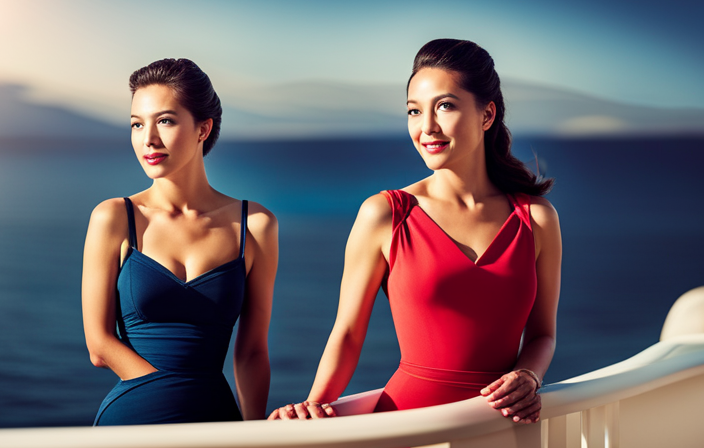
Hello, cruise fans! I am here to provide information about the Crown and Anchor Society loyalty program offered by Royal Caribbean. This program is designed to reward your passion for cruising with fantastic perks at every tier!
Now, let’s talk tiers. We start off with the Gold level, where you’ll enjoy benefits like exclusive events and discounts.
As you sail more, you’ll move up to Platinum, where you’ll score a complimentary photo, free laundry, and even get to chat with the Diamond Plus Pinnacle Club Call Center staff members.
But hold on tight, because the top tier is where the real magic happens. The Pinnacle Club is the crème de la crème. Think complimentary drinks, discounted beverage packages, access to specialty restaurants, and unlimited internet. It’s like sailing in first-class all the way!
Oh, and did I mention the family benefits? Your kids under 18 get to share in the perks too, with discounted ice cream and arcade credits. Now that’s what I call family fun!
So, hop aboard and let’s uncover all the levels and perks of Royal Caribbean’s loyalty program together. Trust me, you won’t want to miss out on this voyage of rewards!
Key Takeaways
- Royal Caribbean’s Crown and Anchor Society loyalty program has multiple levels that are reached based on a points system.
- Platinum tier is reached at thirty cruise points and offers perks such as complimentary photos, laundry services, and exclusive access to staff members.
- Pinnacle Club is the highest level, requiring 700 cruise points, and grants members all perks from lower levels as well as additional benefits like complimentary drinks, discounted beverage packages, and access to exclusive lounges and restaurants.
- The loyalty program also includes benefits for families, with children sharing their parents’ status tier and receiving discounts on ice cream, arcade credits, and complimentary drink coupons.
Loyalty Program Tiers
I’ve learned that Royal Caribbean’s loyalty program has different tiers, such as Gold, Platinum, and Pinnacle Club. These tiers offer various perks and benefits based on the number of cruise points earned. The loyalty program benefits increase as you move up the tiers.
To earn loyalty points, you need to sail with Royal Caribbean. For each night sailed, you earn one point. If you stay in a suite or travel solo, you earn two points per night.
Platinum tier is reached at thirty cruise points. At this level, you receive perks such as a complimentary photo, a free wash and fold bag of laundry on cruises 5+ nights, and exclusive access to Diamond Plus Pinnacle Club Call Center staff members.
The Pinnacle Club is the highest tier, requiring 700 cruise points. Members enjoy all the perks from lower tiers, as well as additional benefits like free daily drinks, Coastal Kitchen access, and suite and concierge lounge access.
Earning Points
To earn points in the Crown and Anchor Society, you can accumulate one point for each night sailed. However, there are additional ways to earn more points.
If you stay in a suite, you’ll receive two points per night. Solo travelers also earn two points per night. And for those lucky enough to be in a suite, you can earn four cruise points per night.
Earning points in the loyalty program comes with many benefits. As you accumulate points, you can move up to higher tiers, such as Platinum and even Pinnacle Club. These tiers offer exclusive perks like complimentary photos, free laundry services, and access to special call center staff.
To maximize your points, consider staying in a suite or traveling solo. These strategies can help you earn more points and unlock additional benefits.
So, whether you’re a frequent cruiser or just starting out, the Crown and Anchor Society loyalty program is a great way to earn rewards and enjoy a memorable cruise experience.
Platinum Tier Benefits
Reaching the Platinum tier in the Crown and Anchor Society means enjoying a range of exclusive privileges and advantages.
As a Platinum member, you can expect a complimentary photo of any size from existing printed photographs, as well as one free $34.99 wash and fold bag of laundry on cruises lasting 5 nights or more.
Additionally, you will have the opportunity to enjoy a complimentary add-on spa treatment (excluding medi-spa services) to further enhance your relaxation and pampering experience onboard.
Another perk of being a Platinum member is the exclusive access to Diamond Plus Pinnacle Club Call Center staff members, who are dedicated to providing personalized assistance.
To reach the Platinum tier, you need to accumulate thirty cruise points.
Whether you’re looking for special moments captured, convenient laundry services, or indulgent spa treatments, the Platinum tier benefits will enhance your Royal Caribbean cruise experience.
Pinnacle Club Perks
As a Pinnacle Club member, I enjoy exclusive perks such as six complimentary daily drinks up to $14, access to Coastal Kitchen on Oasis and Quantum Class ships, and free unlimited Surf + Stream internet for the entire duration of the cruise. The Pinnacle Club is the highest level in Royal Caribbean’s Crown and Anchor Society loyalty program, and it is comprised of a small percentage of Crown and Anchor members who have reached 700 cruise points. Pinnacle Club members have the privilege of enjoying all the perks from the Gold, Platinum, Emerald, Diamond, and Diamond Plus levels. In addition to the aforementioned benefits, Pinnacle Club members also have flexible arrival, access to the Suite and Concierge Lounge, and receive a personalized lapel pin. They also receive milestone cruise certificates at various cruise point milestones, which can be redeemed for balcony cabins or Junior Suites. The exclusivity and extensive benefits of the Pinnacle Club make it a highly sought-after status among loyal Royal Caribbean cruisers.
| Pinnacle Club Perks |
|---|
| Six complimentary daily drinks up to $14 (excludes Starbucks and the Bionic Bar) |
| 40% discount on the Deluxe Beverage Package |
| Coastal Kitchen access on Oasis and Quantum Class ships |
| Daily breakfast at a specialty restaurant |
| Free unlimited Surf + Stream internet for the entire duration of the cruise |
| Flexible arrival for Pinnacle Club guests |
| Suite and Concierge Lounge access |
| Personalized lapel pin |
| Milestone Cruise Certificate at 700 and 1050 cruise points (valued at prevailing rate of a seven-night balcony cabin) |
| Milestone Cruise Certificate at 1400 cruise points and every 350 points thereafter (valued at prevailing rate of a Junior Suite) |
Family Benefits
My family and I also enjoy special benefits as part of the Crown and Anchor Society loyalty program. One of the perks is that guests under 18 share status tier with their parents, up to Diamond Plus level. This means that my children can enjoy similar privileges as us.
For example, they receive four complimentary drink coupons per day if they have Diamond status or status matched with us, and five drink coupons per day if they have Diamond Plus status. Additionally, they can get 50% off one scoop of Ben & Jerry’s ice cream and enjoy surf and stream access equivalent to ours.
They can also take advantage of the buy one Hollywood pay-per-view movie rental, get another one for free offer, and get onboard credit for arcade credits. These family benefits make our cruise experience even more enjoyable and memorable.
Frequently Asked Questions
How long does it take for loyalty points to expire?
Loyalty points never expire, giving you ample time to enjoy the perks. If you forget to claim points, don’t worry! Royal Caribbean allows you to request missing points up to 12 months after your cruise.
Can I request to add missing cruise points if I forgot to have them added after a previous cruise?
Yes, you can request to add missing cruise points if you forgot to have them added after a previous cruise. Loyalty points do not expire, so you can always request to have them added.
Can perks be shared among friends traveling together?
Unfortunately, perks cannot be shared among friends traveling together. However, spouses and children can be added as part of a family group, allowing them to enjoy the loyalty program benefits for group travel.
Does Celebrity Cruises honor Crown and Anchor status for all levels?
Yes, Celebrity Cruises recognizes Crown and Anchor status for all levels. This means that members of Royal Caribbean’s loyalty program can enjoy their benefits when sailing with Celebrity Cruises.
Is there a limit to the number of points that can be earned in the loyalty program?
There is no limit to the number of points that can be earned in Royal Caribbean’s loyalty program. To maximize points, consider staying in suites, sailing solo, and taking advantage of the various perks offered at different levels.
Conclusion
In conclusion, Royal Caribbean’s loyalty program, the Crown and Anchor Society, offers a range of tiers and perks to its members.
From the Platinum tier with its complimentary photo and exclusive access to the Diamond Plus Pinnacle Club Call Center, to the Pinnacle Club with its complimentary drinks and unlimited internet, there are benefits for every level.
Family benefits are also provided, ensuring that children can enjoy discounted ice cream and arcade credits.
As the saying goes, "loyalty pays off," and with Royal Caribbean’s loyalty program, it truly does.
Meet Asra, a talented and adventurous writer who infuses her passion for exploration into every word she writes. Asra’s love for storytelling and her insatiable curiosity about the world make her an invaluable asset to the Voyager Info team.
From a young age, Asra was drawn to the power of words and their ability to transport readers to far-off lands and magical realms. Her fascination with travel and cultures from around the globe fueled her desire to become a travel writer, and she set out on a journey to turn her dreams into reality.
Cruise Destinations
Ideal Time For A Bahamas Cruise: Beat The Crowds And Heat
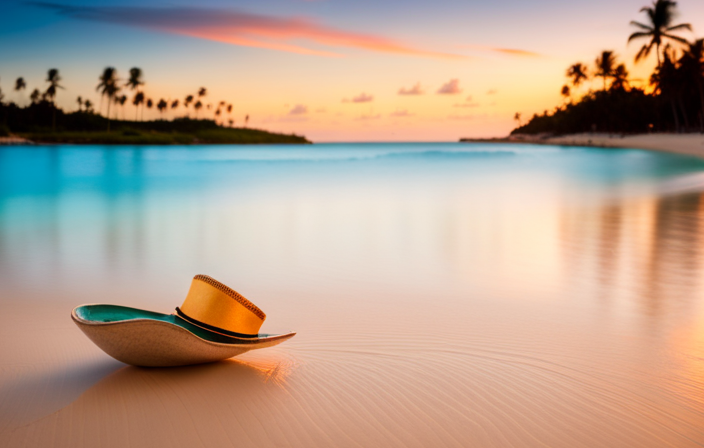
“The early bird gets the worm” is a saying that highlights the importance of booking a cruise to the Bahamas in advance. I strongly believe that timing is crucial, especially if you want to avoid crowds and the hot weather.
That’s why I’m here to share with you the ideal time for a Bahamas cruise, where you can escape the hustle and bustle and enjoy a more relaxed and comfortable experience.
Between November and May, the Bahamas offers a haven for those seeking a break from the peak temperatures and humidity. With fewer crowds and a more peaceful atmosphere, this time frame allows you to truly unwind and soak in the beauty of this tropical paradise.
Plus, if you book your cruise before Thanksgiving in the first two weeks of November, you may even score some better pricing options. So, whether you’re yearning for a family vacation or a romantic getaway, it’s time to set sail and beat the crowds and heat on a Bahamas cruise.
Key Takeaways
- November to May is the ideal time for a Bahamas cruise, as it offers fewer crowds and a more peaceful atmosphere.
- Booking before Thanksgiving in November may provide better pricing for a Bahamas cruise.
- The average high temperature in the Bahamas is 86 degrees, with an average low of 71 degrees.
- Cruising in November to May offers a more comfortable climate compared to July, which has temperatures around 83 degrees.
When to Go
When it comes to deciding when to go on a Bahamas cruise, I always try to choose a time between November and May to beat the crowds and avoid the peak temperatures and humidity.
Cruising during these months has its pros and cons. One of the main advantages is that it falls outside the high demand season, meaning there’s a possibility of fewer crowds. This allows for a more relaxed and enjoyable experience. Additionally, booking before Thanksgiving in the first two weeks of November can often result in better pricing.
On the other hand, the temperatures in the Bahamas during this time are still quite pleasant, with an average high of 86 degrees and an average low of 71 degrees. Compared to the hotter months, such as July, when temperatures reach around 83 degrees, cruising in November-May offers a more comfortable climate.
When choosing the best time for a Bahamas cruise, it’s important to consider personal schedules and preferences. For families, July may be more suitable due to school and extracurricular calendars. Ultimately, the ideal time to go on a Bahamas cruise depends on individual factors and desired experiences.
Weather and Temperatures
While planning my trip, I can’t help but imagine the warm and inviting temperatures of the Bahamas, like a gentle embrace from the sun. The best months for cruising to the Bahamas are from November to May. By avoiding the peak season, I can enjoy the benefits of fewer crowds and more affordable pricing.
The weather during this time is just perfect, with average high temperatures of 86 degrees and average lows of 71 degrees in Nassau. Compared to the heat of July, which reaches 83 degrees, cruising during the cooler months seems much more appealing. Not only will I be able to explore the stunning beaches and crystal-clear waters comfortably, but I’ll also have a chance to experience the Bahamas without the discomfort of high humidity.
Avoiding the peak season truly allows for a more enjoyable and relaxing cruise experience.
Personal Considerations
As I plan my trip to the Bahamas, I must take into account my personal considerations. When it comes to vacation planning, everyone has their own preferences. For me, it’s important to choose a time that aligns with my schedule and allows me to fully enjoy the cruise experience.
While November to May is generally considered the best time to cruise to the Bahamas, I need to consider factors like work commitments and family obligations. July might be a suitable option for me, as it coincides with school holidays and extracurricular calendars, making it easier for the whole family to join. However, I also need to consider the weather.
July temperatures in Nassau are slightly lower than the average high of 86 degrees in November, which means I can still enjoy the sunshine without feeling overwhelmed by the heat. Ultimately, finding the ideal time for a Bahamas cruise requires a balance between personal preferences and practicality.
Frequently Asked Questions
Are there any specific events or festivals in the Bahamas that I should consider when planning a cruise?
When planning a cruise to the Bahamas, it’s worth considering the vibrant festivals and events that take place throughout the year. From the Junkanoo Carnival to the International Film Festival, there’s something for everyone to enjoy and immerse themselves in the rich culture of the Bahamas.
Are there any specific activities or excursions that are highly recommended during a Bahamas cruise?
Top recommended activities during a Bahamas cruise are snorkeling in the crystal-clear waters, exploring the vibrant coral reefs, and swimming with dolphins. Must-try excursions include visiting the stunning Blue Lagoon Island and taking a tour of Nassau’s historic sites.
Can you provide any tips or recommendations for first-time cruisers to the Bahamas?
First time cruisers in the Bahamas: Tips and recommendations! Don’t miss the stunning beaches of Nassau and Freeport. Go snorkeling in the crystal-clear waters and explore the vibrant coral reefs. Visit the famous Blue Lagoon Island for a memorable dolphin encounter!
What are some popular cruise lines that offer Bahamas itineraries?
The best time to visit the Bahamas for a cruise is from November to May. Popular cruise lines offering Bahamas itineraries include Royal Caribbean, Carnival, and Norwegian.
Are there any specific ports in the Bahamas that are known for their beautiful beaches or unique attractions?
There are several ports in the Bahamas known for their beautiful beaches and unique attractions. Some popular ones include Nassau, with its stunning Cable Beach, and Freeport, which offers the unique experience of swimming with pigs on Pig Beach.
Conclusion
In conclusion, the best time to embark on a Bahamas cruise is between November and May, where you can beat the crowds and avoid the intense heat.
With temperatures ranging from 71 to 86 degrees, you’ll enjoy a comfortable and pleasant experience.
By booking your cruise before Thanksgiving, you may even snag better pricing options.
So why wait? Set sail and bask in the beauty of the Bahamas, where paradise awaits.
Don’t let this opportunity pass you by, make your dreams come true on a Bahamas cruise!
Meet Asra, a talented and adventurous writer who infuses her passion for exploration into every word she writes. Asra’s love for storytelling and her insatiable curiosity about the world make her an invaluable asset to the Voyager Info team.
From a young age, Asra was drawn to the power of words and their ability to transport readers to far-off lands and magical realms. Her fascination with travel and cultures from around the globe fueled her desire to become a travel writer, and she set out on a journey to turn her dreams into reality.
Cruise Destinations
Exploring The Charms Of Bimini, Bahamas: Adventure, Views, And Local Delights!
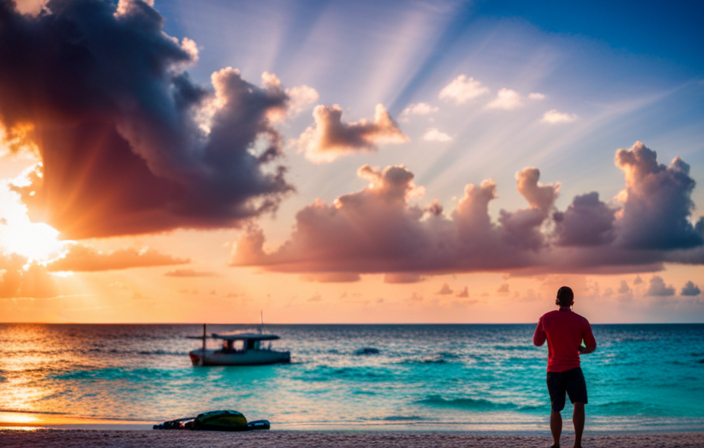
Located on the beautiful white sandy beaches of Bimini, Bahamas, I felt a strong sense of curiosity. The transparent turquoise waters stretched out in front of me, tempting me to plunge in and discover the colorful marine life that dwells below.
The warm sun kissed my skin, and the gentle breeze whispered tales of hidden treasures waiting to be discovered. Bimini is a paradise for those seeking thrilling experiences, breathtaking views, and mouthwatering local delights.
From renting kayaks to sipping cocktails with panoramic views, there is no shortage of things to do and see in this tropical haven. Whether you’re visiting popular bars like Big Johns or indulging in the rustic charm of Island House, Bimini offers an array of experiences that will leave you wanting more.
So pack your bags, grab your sense of adventure, and let’s dive into the charms of Bimini, Bahamas!
Key Takeaways
- Bimini, Bahamas offers pristine white sand beaches and crystal-clear turquoise waters.
- The destination is known for its vibrant marine life and sense of adventure.
- Travelers can enjoy activities such as renting kayaks to explore secluded coves and beaches, and sipping cocktails with panoramic views.
- Local cuisine in Bimini includes fresh seafood, conch salad, cracked conch, and coconut shrimp.
Places to Visit
https://www.youtube.com/watch?v=C4F38dOJ9bc
I can’t wait to explore the places to visit in Bimini, Bahamas. There are so many things to do, like renting kayaks and enjoying cocktails with beautiful views. You can also visit popular spots like Big Johns Bar and Grill and Bimini Seafood and Conch Bar. But beyond these well-known attractions, Bimini has some hidden gems waiting to be discovered.
One of the best ways to explore the island’s natural beauty is through water activities. Renting kayaks allows you to navigate the crystal-clear waters and discover secluded coves and pristine beaches. As you paddle along, you’ll be mesmerized by the vibrant marine life swimming beneath you.
And after a day of adventure, treat yourself to a refreshing cocktail while taking in the breathtaking views of the Bahamian sunset. Bimini is truly a paradise for those seeking both adventure and relaxation.
Tips for Traveling
When traveling to Bimini, Bahamas, it’s important to check the opening times of establishments and bring cash as some places don’t accept credit cards.
Additionally, there are a few packing essentials you should consider for your trip. As Bimini is known for its beautiful beaches and outdoor activities, make sure to pack sunscreen, a hat, and comfortable walking shoes. Don’t forget your swimsuit and beach towel, as you’ll definitely want to take a dip in the crystal-clear waters.
Now, let’s talk about the local cuisine in Bimini. Seafood lovers will be in paradise here, with fresh catches of the day being a staple on many menus. Be sure to try the conch salad, a local delicacy, and indulge in some delicious Bahamian cuisine like cracked conch and coconut shrimp. Your taste buds will thank you for it!
About Asra
Asra, a passionate traveler and cruising enthusiast, is known for sharing valuable tips and information about cruising with fellow Canadians, as well as teaching business studies with a focus on strategy.
With her extensive knowledge and experience, she has become a trusted source for those looking to plan the perfect cruise vacation. Asra’s expertise in teaching business studies allows her to offer unique insights into the strategic aspects of the cruising industry, giving her students a comprehensive understanding of the business side of travel.
Her dedication to sharing cruising tips and information not only enhances the travel experiences of her fellow Canadians but also inspires others to embark on their own adventures. Asra’s passion for travel and cruising shines through in her engaging and informative approach, making her a sought-after resource in the world of travel.
Frequently Asked Questions
What are some popular water activities to do in Bimini, Bahamas?
I dove into the crystal-clear waters of Bimini, Bahamas, immersing myself in a vibrant underwater world. Snorkeling among colorful coral reefs and swimming with tropical fish was an unforgettable experience. And for fishing enthusiasts, Bimini offers thrilling deep-sea fishing adventures.
Are there any historical sites or landmarks to visit in Bimini?
Bimini, Bahamas offers a rich historical heritage to explore. Famous shipwrecks like the SS Sapona and the Hesperus are popular among divers. Bimini’s history, including its connection to Ernest Hemingway, has greatly influenced its vibrant cultural heritage.
Can you recommend any local restaurants or food specialties in Bimini?
Sure! When visiting Bimini, Bahamas, don’t miss out on the local culinary delights. Some must-try dishes include fresh catches of seafood and traditional flavors. Explore hidden gems like local restaurants offering delicious seafood specialties.
Are there any festivals or events that take place in Bimini throughout the year?
Bimini’s annual festivals and events are a vibrant celebration of music and cultural festivities. From the Bimini Blues and BBQ Festival to the Annual Junkanoo Parade, there’s always something exciting happening on this beautiful island.
What is the best way to get around the island of Bimini?
The best transportation option for getting around the island of Bimini is renting a golf cart. It’s a fun and convenient way to explore the island and take in the beautiful views.
Conclusion
As I conclude my exploration of the charming paradise that is Bimini, Bahamas, I’m left in awe of the adventure, breathtaking views, and local delights that await.
From kayaking through crystal-clear waters to sipping cocktails while basking in the beauty of the island, every moment is a sensory delight.
The lively bars and grills, like Big Johns, offer a taste of the vibrant local scene, while the rustic charm of Island House beckons you to unwind.
Don’t forget to indulge in the fresh seafood at Bimini Seafood and Conch Bar, where the patio invites you to savor the flavors of the sea.
With Asra’s expert tips guiding the way, this trip promises to be an unforgettable experience.
So pack your bags, embrace the adventure, and let Bimini’s enchantment wash over you like the gentle waves of the Caribbean.
Bon voyage!
Meet Asra, a talented and adventurous writer who infuses her passion for exploration into every word she writes. Asra’s love for storytelling and her insatiable curiosity about the world make her an invaluable asset to the Voyager Info team.
From a young age, Asra was drawn to the power of words and their ability to transport readers to far-off lands and magical realms. Her fascination with travel and cultures from around the globe fueled her desire to become a travel writer, and she set out on a journey to turn her dreams into reality.
-

 Cruise FAQs3 days ago
Cruise FAQs3 days agoHow To Turn On Cruise Control Tesla Model 3
-

 Cruise FAQs3 months ago
Cruise FAQs3 months agoWhat Is The Weather Like On A Transatlantic Cruise In April
-

 Cruise FAQs3 days ago
Cruise FAQs3 days agoHow To Set Cruise Control Tesla Model Y
-

 Cruise FAQs3 months ago
Cruise FAQs3 months agoHow to Contact Someone on a Carnival Cruise Ship
-
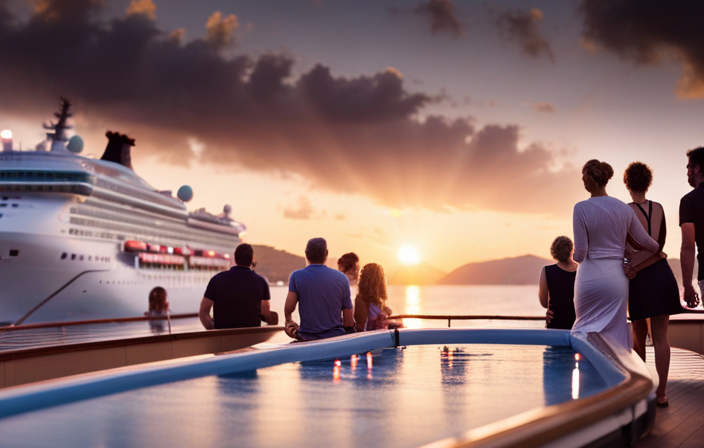
 Cruise Lines3 months ago
Cruise Lines3 months agoWhat Is The Average Age Of Passengers By Cruise Line
-

 Onboard Experience1 week ago
Onboard Experience1 week agoFinding Deals On Unsold Cruise Cabins: Tips And Strategies
-
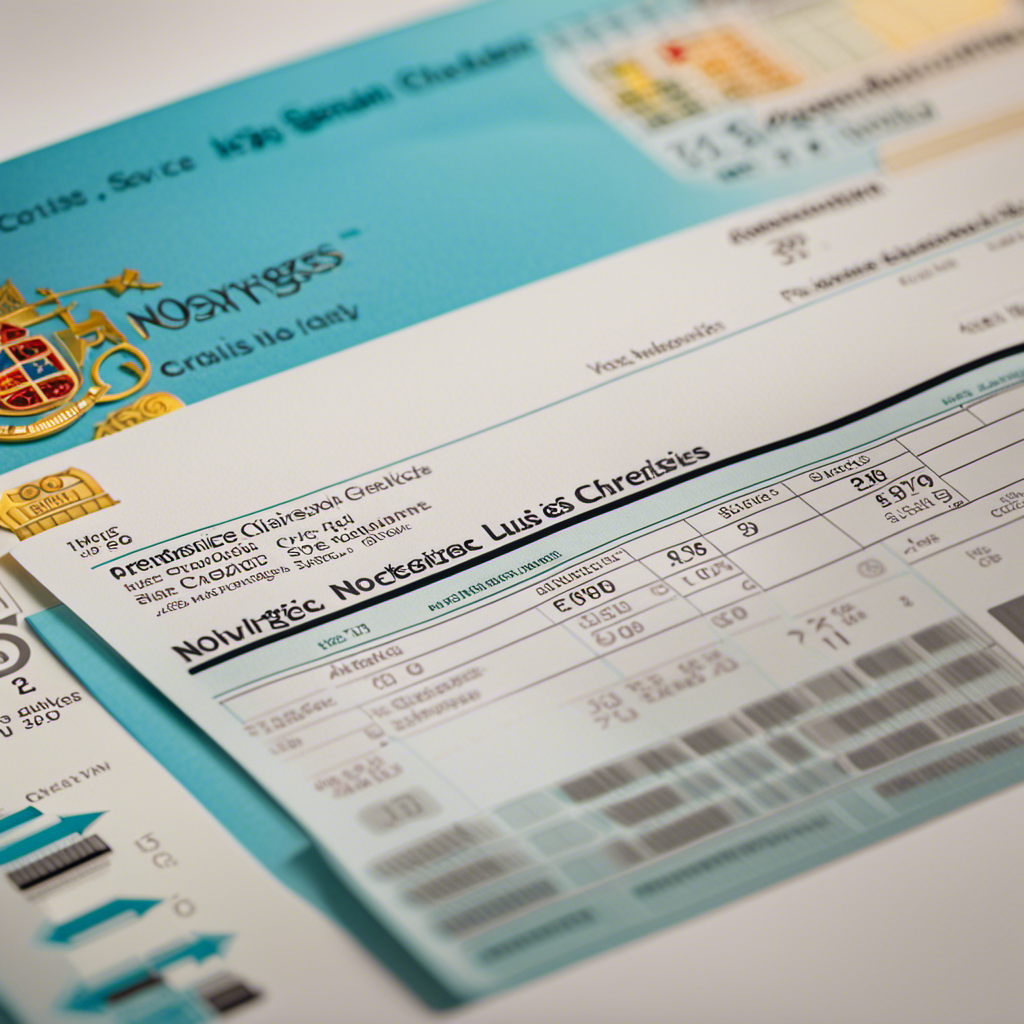
 Cruise Lines3 months ago
Cruise Lines3 months agoDecoding Norwegian Cruise Line’s Gratuities and Service Charges
-
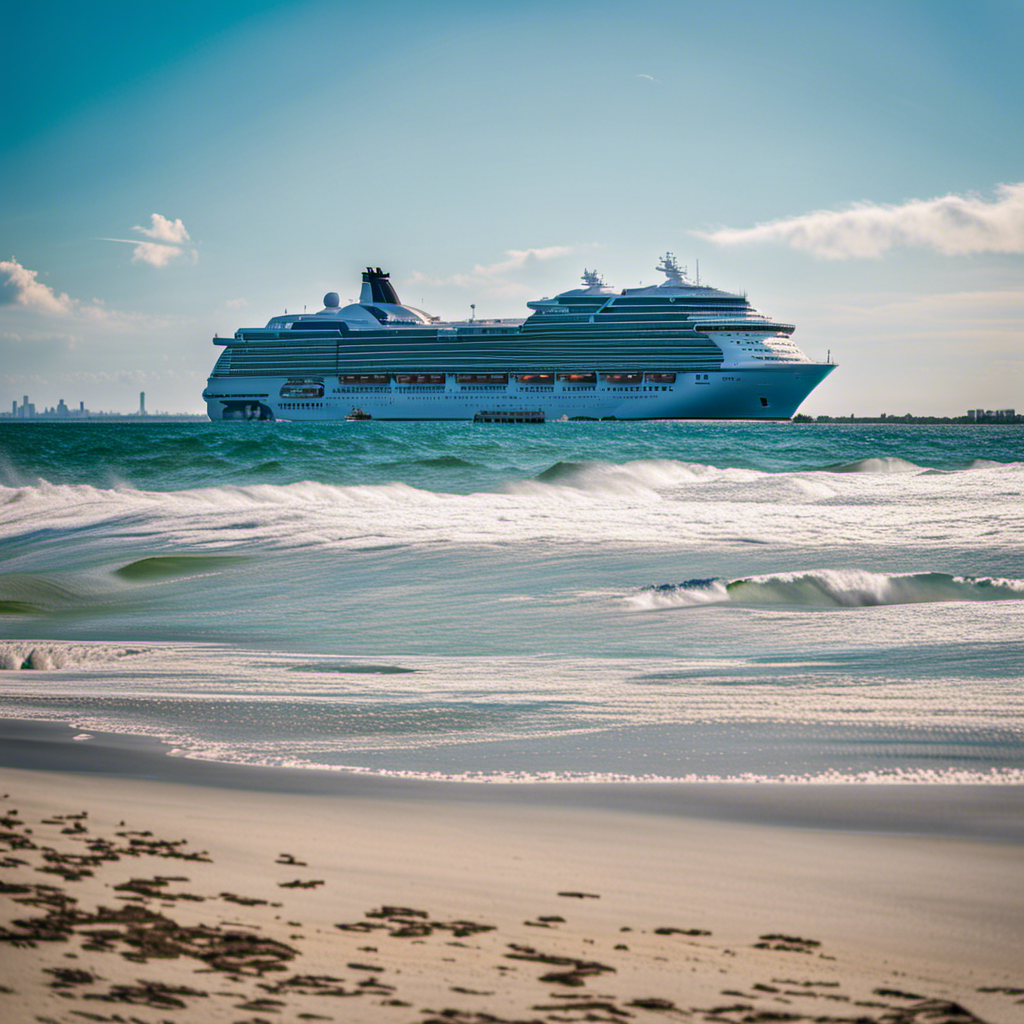
 Cruise Lines3 months ago
Cruise Lines3 months agoWhat Cruise Lines Depart From North Carolina








